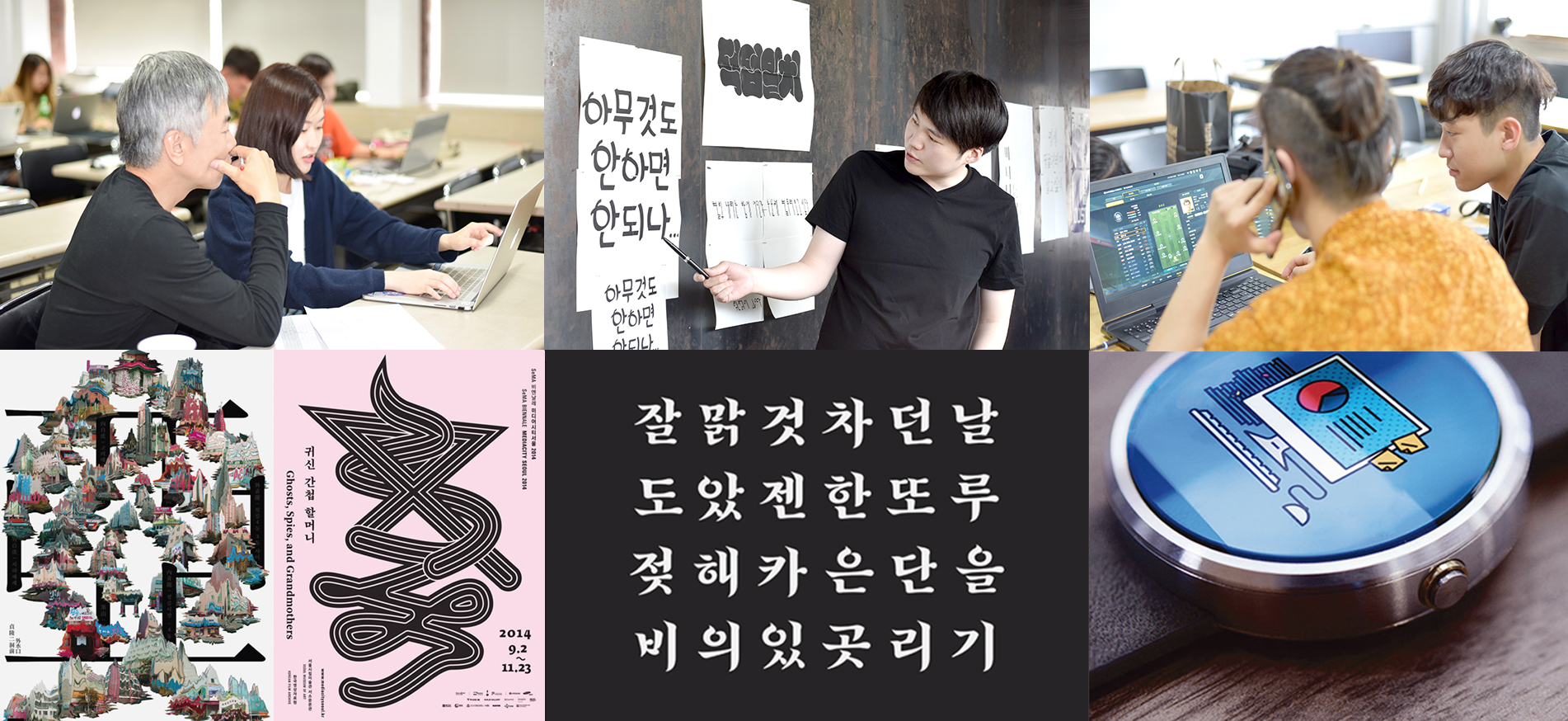Introduction
-
About
The Department of Visual Communication Design explores the ways to create effective communication techniques based on creative thinking and practical skills throughout the whole process from visualization of information to production and distribution of information by cultivating insights for understanding the cultures as well as the design ability to visualize the insights. The curriculum of the Department of Visual Communication Design is organically organized to provide the experiences on various media as well as the professional depth of the field. Through the balance of theory and practice, the educational goal is to cultivate the qualities of designers as creators and interpreters of the culture, as well as acquiring the expertise and knowledge on the field.
-
Vision
We, as designers, cultivate the art of exquisite visual language, and use our ability to make the world richer than ever. We respect humanity which media and technology exist for. We believe in visual language that is built by free will of and for everyone. We encourage individual diversity. We create knowledge for all. We aim to foster a universal design community. We honor rightful authority, but not misused authority; inherit noble traditions, and not old conventions. We are the people who realize that visual communication is the most powerful vehicle to change the way we think. And we just might change the world.
-
Curriculum
The education at the Department of Visual Communication Design focuses on developing the ability to gain insights into the contemporary visual culture by learning a history and theory of the field. As one of the basic course that form the central axis of the curriculum, <Basic Design> helps students understands the relationship among signs, symbols, and images and analyzes various visual expression methods based on the understanding. <Graphic Designs I-IV> helps students understand the design methodology that logically solves the design problems through the process of researching, analyzing and synthesizing information, and further develop the visual thinking ability to produce creative designs through concrete examples and projects. <Typography I and II> deals with the theory and practice of design through representation of letters, one of the key expressions in visual design. <Design Theories> focuses on the connections between philosophical ideas and the aesthetic foundations of design which have been discussed in aesthetics, architecture, industrial design, modernism, postmodernism, popular cultures, and technology from the 19th century to the present to teach the socio-cultural roles and values of design. Upper-year students are allowed to take elective courses to foster individual design abilities upon individual interest. For example, <Experiential Design> is a course that provides design approaches to UI and U through content storytelling, based on an understanding of basic concepts of digital media and interaction. <Design Strategies> is a course that helps students understand the various processes and strategies that occur when practicing in the field and experientially apply the understanding to their own projects. <Types and Media> experiments and explores projects using various media based on types and typography.









